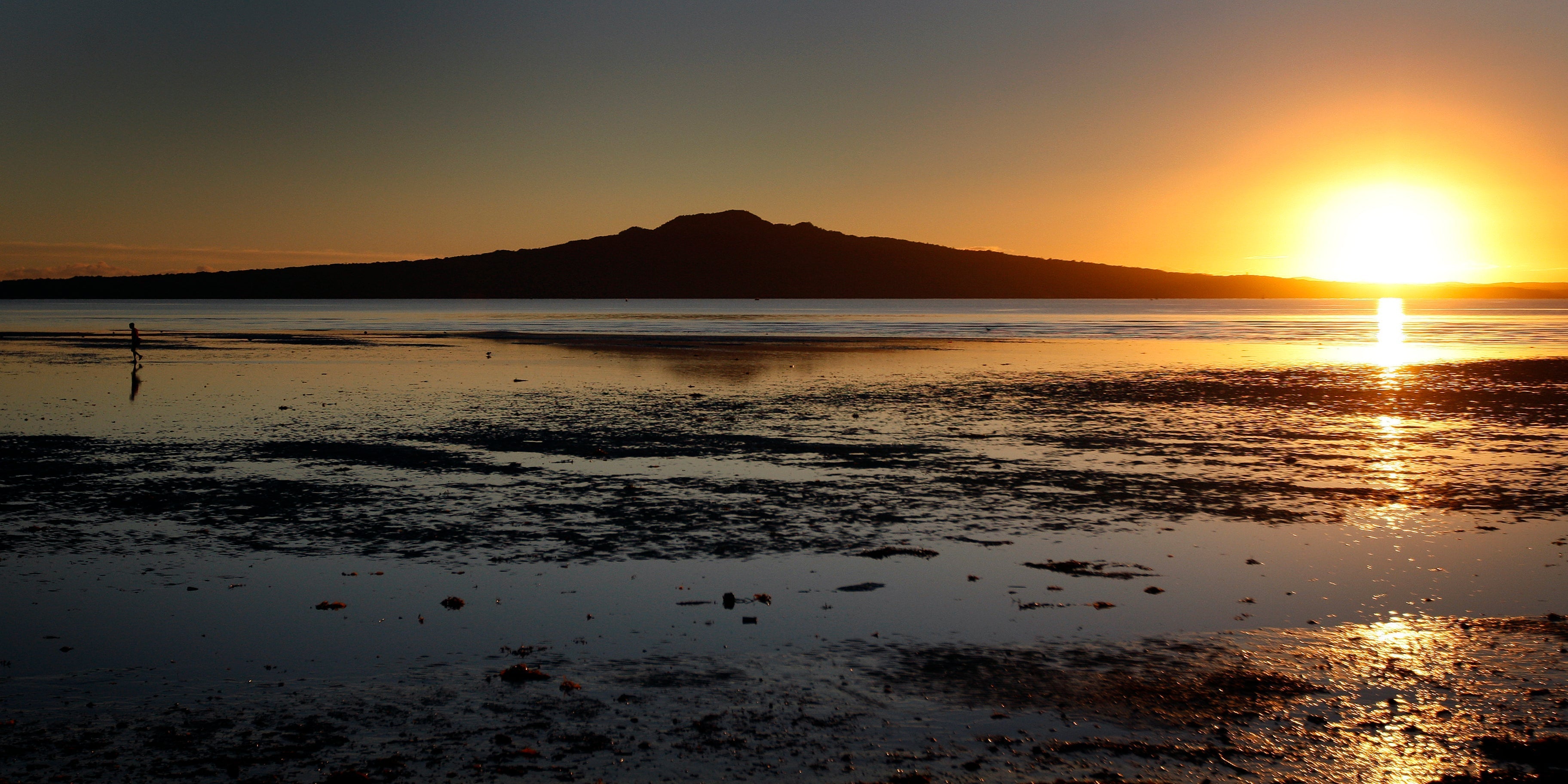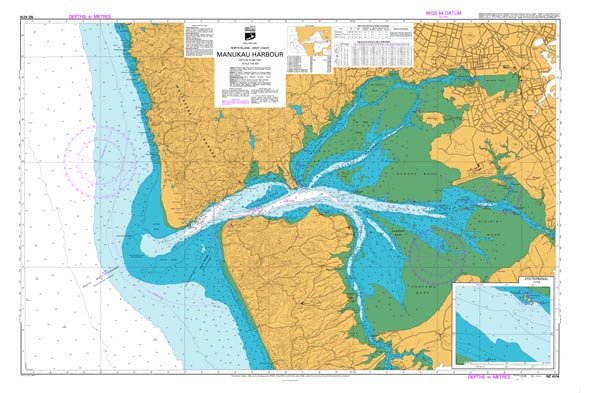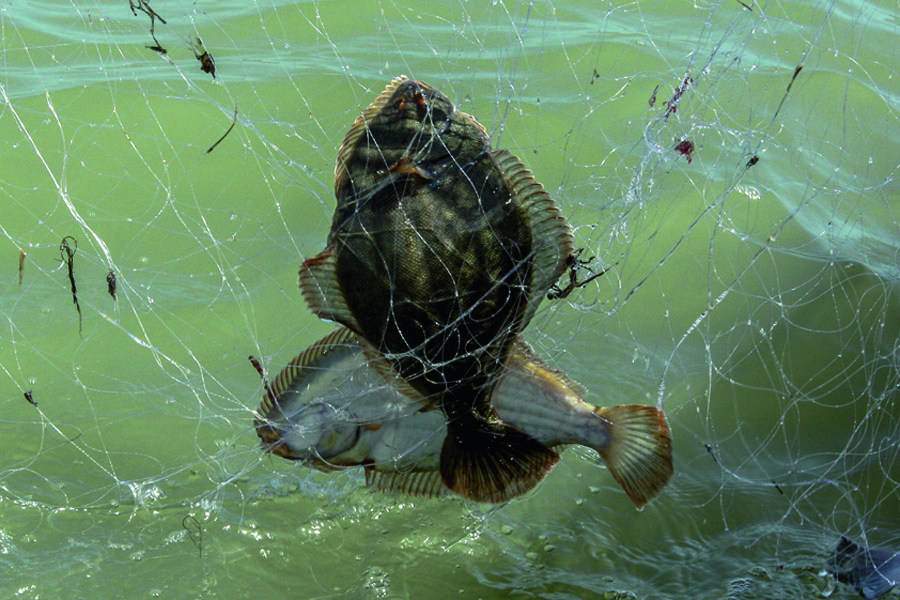Introduction – The quiet gold of our harbours
There’s something quietly magical about walking the flats on a warm summer night, the torchlight gliding across mirror-calm water, the faint outline of a flounder emerging from the sand.
For many of us at Action Outdoors, that moment is what fishing in New Zealand is all about — local, sustainable, and simple.
The west coast harbours — Manukau, Kaipara, and Raglan (Whaingaroa) — are among the richest in the country for flounder. They’re muddy, tidal, and alive with worms, crabs, and shrimp — perfect conditions for the yellow-belly flounder (Rhombosolea leporina), our most common and best-tasting flatfish.
But catching them regularly and responsibly means understanding their life cycle. These fish don’t just hang around one spot — they migrate, spawn, and use our harbours in ways that tell you when and where to find them.
This blog breaks down how the flounder’s life works on New Zealand’s west coast, the seasonal movements through Manukau, Kaipara, and Raglan, and the best times and places for shallow-water success. We’ll also point you to government research that mapped these movements, and link you to some of the flounder nets we trust here at Action Outdoors.
 Meet the Yellow-belly Flounder
Meet the Yellow-belly Flounder
The yellow-belly flounder is a homegrown Kiwi species — found nowhere else but New Zealand. It’s the one you’ll find most often in our estuaries, and the one you’ll be eating at the summer fish-and-chip shop.
They have a distinct olive-brown topside and a pale yellowish belly, with both eyes on the right-hand side when viewed from above. They’re built to disappear — burying in the mud or sand until a stray shrimp passes by.
Fun fact: They can change the tone of their top-side skin to match their surroundings in seconds, making them nearly invisible.
Life stages – from drifting egg to harbour hunter
The life of a flounder is a story of movement — from open sea to estuary and back again.
1. Spawning (Winter–Spring)
Adult yellow-belly flounder leave the shallows and move offshore or into deeper harbour channels to spawn.
Research from NIWA and the Ministry for Primary Industries (MPI) shows that on the east coast (Hauraki Gulf), spawning occurs in September–October at depths of 18–27 m off the Firth of Thames.
While the west coast doesn’t have an exact mapped polygon yet, studies show Manukau adults do the same thing — moving into deeper main channels in winter and spring. The same pattern likely holds in Kaipara and Raglan, where water temperature and tides are similar.
After spawning, the tiny eggs drift for a few days before hatching into larvae that ride the currents back toward the coast.
2. Larval Drift & Transformation
The larvae spend several weeks drifting, tiny, transparent, and upright like normal fish. As they near the coast, they go through a metamorphosis: one eye slides across the head, and their body flattens to live on the seabed.
By this point, they’re ready for shallow life.
3. Juvenile Settlement (Summer)
The juveniles settle in muddy or sandy flats of estuaries and sheltered harbours — precisely what we see across Manukau’s upper reaches, Kaipara’s tidal creeks, and Raglan’s side arms.
Government mapping from the NABIS database shows the highest juvenile yellow-belly flounder densities in Kaipara and Manukau Harbours — two of the largest estuarine nursery zones in the country.
These young fish feed on worms, small crustaceans, and anything the tide delivers.
4. Adult Feeding & Growth (Autumn–Summer)
Once they mature — around 2 years old — flounder move between feeding zones and channels with the seasons. Adults may reach 40–50 cm in length, though most are caught at smaller sizes.
They feed mainly at night, coming onto the flats with the tide and returning to deeper water as it ebbs.
Manukau Harbour – The commuter harbour
Manukau Harbour is a complex network of channels, sandbanks, and mudflats.
In summer, you’ll find flounder across the inner flats — especially around Huia, Cornwallis, Mangere Inlet, and Karaka. These are prime feeding grounds when the water warms.
NIWA’s 2013 assessment work in Manukau revealed strong juvenile recruitment and indicated that adult migrations in winter–spring link to deeper main channels — likely tied to spawning.
What this means for you:
- Summer & early autumn: Fish the inner flats at night on a rising or first-of-the-ebb tide.
- Winter–spring: Expect fewer fish in the shallows — most adults are spawning in main channels or near the harbour entrance. Be respectful of that cycle.
- Tactics: Quiet wading, minimal light, and slow sweeps with your torch. Flounder sit still until you nearly step on them.
If you’re setting nets, check the MPI Manukau set-net rules carefully — sections near the harbour entrance are restricted for Māui dolphin protection.
🪣 Recommended gear:
Flounder Fishing Nets – Action Outdoors
We stock a range of 20 m–60 m nets with NZ-legal mesh sizes, ideal for sheltered estuary and harbour use.
Kaipara Harbour – The giant nursery
Kaipara is enormous — the largest harbour in the Southern Hemisphere by volume.
It’s shallow, rich, and muddy — a paradise for juvenile fish. NIWA’s data consistently identifies Kaipara as one of the country’s most crucial juvenile flounder nurseries.
Flounder movement & life cycle in Kaipara
- Spawning: Likely occurs in the outer-harbour channels or just offshore during winter–spring, following the same pattern seen in Manukau and Hauraki.
- Juveniles: Abundant in the tidal creeks and sheltered inner reaches — especially near Pouto, Tinopai, and Hukatere arms.
- Adults: Return to feed in summer and autumn, often following the incoming tide into shallows as little as 30 cm deep.
Fishing tip: The key to Kaipara is timing the tide. Because the flats are so extensive, the fish move quickly — about 20–30 minutes after the flood reaches a zone, they’re feeding.
Use a torch or headlamp, and always carry a paddle or GPS marker — the tide drops fast, and it’s easy to get stranded.
Seasonal pattern for Kaipara:
Season Activity Where to Fish Dec–Apr Peak shallow-water feeding Muddy side creeks, cockle beds May–Jun Transition Edges of deeper channels Jul–Oct Spawning period Outer channels — avoid targeting fish Nov Return of adults & juveniles Inner flats and mangrove edges
Raglan (Whaingaroa) Harbour – The hidden gem
Raglan is smaller than Kaipara or Manukau but shares their flounder-friendly DNA — muddy estuaries, shell beds, and shallow creeks.
It’s a quieter fishery, but those who know it well enjoy superb summer flounder.
Seasonal rhythm:
- Late spring to early autumn (Nov–Apr): Best time for shallow action, especially in calm weather with light winds.
- Winter (Jun–Aug): Fewer shallow fish; some move to the harbour mouth or deeper channels, probably for spawning.
- Night vs day: Flounder are most active at night and on the last half of the rising tide.
Locals often wade around Te Akau, Okete, and Waitetuna arms, or set small legal nets on evening tides.
Government Research Behind the Scenes
If you’re the kind of angler who likes to understand the “why”, here are the key research pieces that inform everything above:
- NABIS Lineage (MPI) – “Annual distribution of spawning yellow-belly flounder”
- → Found Hauraki spawning belt from Tapu to Ponui, 18–27 m, Sep–Oct.
- NABIS Juvenile Distribution Maps – Show high juvenile YBF density in Kaipara & Manukau.
- NIWA Fisheries Assessment Report 2013/10 – Manukau juvenile monitoring project.
- Colman, 1973 – Classic Hauraki Gulf flounder spawning research, still referenced today.
Each of these helped shape the modern understanding of flounder migrations around New Zealand — including how we manage set-net rules and size limits.
When & How to Catch Flounder on the West Coast
Best seasons for shallow water
- Summer (Dec–Mar): The golden window — water’s warm, fish are feeding hard.
- Autumn (Apr–May): Still strong; fish are well-fed and close in.
- Winter–Spring (Jun–Oct): Quiet in the shallows as adults move to spawn — best to let them be.
Conditions that matter
- Tide: Last of the incoming → first of the ebb = feeding time.
- Wind: Calm or offshore; muddy harbours get messy in strong onshore winds.
- Light: Flounder feed best on dark, still nights — new moon is perfect.
Techniques
- Spotlighting/Spearing: Classic Kiwi style. Slow and quiet. Aim just ahead of the fish (refraction trick).
- Dragging Net: Best on smooth sandy flats. Two people, one leadline to hold depth.
- Set Net: Choose mesh and placement carefully; follow MPI regulations — particularly near harbour mouths.
🪣 Browse our full range here:
➡️ Flounder Fishing Nets – Action Outdoors
Regulations & Responsibility
Flounder are a renewable but fragile fishery. They grow quickly but live only about 3–4 years, and most spawn once or twice. That means each mature fish counts.
Check before you go:
- Minimum size: 25 cm for yellow-belly flounder.
- Daily limit: Up to 20 flatfish (within combined finfish limit — check your zone).
- Set-net bans: Active in parts of Manukau, Kaipara, and Raglan for Māui dolphin protection.
- Trawl restrictions: Outer-harbour zones also limited for conservation.
👉 Use the MPI NZ Fishing Rules App for live updates.
If you want a quick local summary, see our post:
📘 New Zealand Fishing Rules 2025 – Action Outdoors
Telling the seasons by feel
At Action Outdoors, we’ve noticed you can almost smell the flounder season.
- In December, the mud warms and baitfish flicker along the edges.
- By January, the first hot nights bring the best torching conditions.
- In April, cooler air and clear water mean fewer fish but bigger ones.
- Come June, the flats go quiet — a sign they’ve moved deeper to do what fish do.
Understanding those rhythms isn’t just good fishing — it’s part of being in sync with the harbours.
Tips from the team
- Don’t drag nets over seagrass or shell beds — they’re nursery habitats.
- If you lift a fish full of eggs (soft, swollen belly, pale underside), let it go.
- Always secure nets against the tide and mark them clearly.
- Clean gear afterwards — mud harbours can spread unwanted hitchhikers.
Quick Reference Table – Flounder Movement in West-Coast Harbours
Harbour Peak Shallow Season Likely Spawning Period Key Habitat Notes Manukau Dec–Apr Jul–Oct Muddy inner flats, side channels NIWA data confirm juvenile-adult link Kaipara Dec–Apr Jul–Oct Mud creeks, outer channels Highest juvenile abundance Raglan Nov–Apr Jun–Aug Inner arms, shell beds Small but stable fishery
Final Word – Know the fish, respect the season
Flounder fishing isn’t about numbers — it’s about rhythm.
Understanding how these humble flatfish move through our harbours helps you fish smarter and look after the resource for future generations.
Here at Action Outdoors, we’re proud to help Kiwis get the right gear and the right knowledge. Whether you’re spotlighting with the kids or setting a net for a weekend BBQ, remember the best catch is one that keeps the fishery strong.
🎣 Shop flounder nets & accessories:





